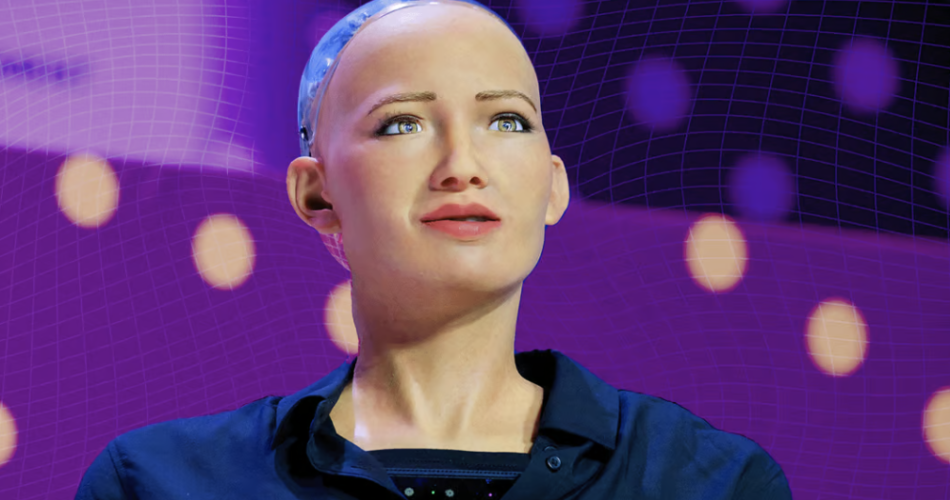As a writer fascinated by the intersection of technology and human psychology, I’ve long been captivated by the concept of the “Uncanny Valley.” This intriguing phenomenon explores the complex and often unsettling relationship between humans and humanlike robots or computer-generated characters.
In this article, we’ll dive deep into the Uncanny Valley, uncovering its history, the psychological impact it has on us, and the role it plays in the rapidly evolving world of robotics and artificial intelligence. We’ll also examine how this phenomenon has manifested in popular culture and consider whether it can ever be overcome.

Uncanny Valley
Contents
- 1 What is the Uncanny Valley?
- 2 The History of the Uncanny Valley Theory
- 3 The Psychological Impact of the Uncanny Valley
- 4 Examples of the Uncanny Valley in Popular Culture
- 5 The Role of Robotics in the Uncanny Valley
- 6 Can the Uncanny Valley be Overcome?
- 7 The Future of the Uncanny Valley in Robotics and AI
- 8 Ethical Considerations Surrounding the Uncanny Valley
- 9 Conclusion
What is the Uncanny Valley?
The Uncanny Valley is a term coined by Japanese robotics professor Masahiro Mori in 1970. It describes the emotional response humans have towards humanlike robots or computer-generated characters. As these entities become more lifelike and humanlike in appearance and behavior, our affinity towards them initially increases. However, once they reach a certain level of realism, we begin to experience a sudden sense of unease, revulsion, or even fear.
This dip in our positive emotional response creates a “valley” in the graph, which is why it’s known as the Uncanny Valley. It’s as if the robot or character has crossed a threshold where they are no longer clearly artificial, but not quite human either, resulting in a deeply unsettling feeling.
The History of the Uncanny Valley Theory
The concept of the Uncanny Valley has its roots in the field of robotics and the quest to create humanlike machines. Mori’s original hypothesis was that as robots become more humanlike, our affinity towards them would increase, but only up to a certain point. Beyond that point, the subtle differences between the robot and a real human would become glaringly apparent, triggering a negative emotional response.
Over the years, the Uncanny Valley theory has been explored, tested, and debated by researchers in various fields, including psychology, neuroscience, and computer science. While the exact mechanisms underlying this phenomenon are still not fully understood, the Uncanny Valley has become a widely recognized and studied aspect of human-robot interaction.
The Psychological Impact of the Uncanny Valley
The Uncanny Valley is a fascinating example of how our brains process and respond to humanlike entities. Psychologists and neuroscientists have delved into the cognitive and emotional processes at play, shedding light on why we experience such a strong reaction to these entities.
One key factor is the way our brain processes visual and behavioral cues. When we encounter a humanlike robot or character, our brain is constantly comparing what we see to our internal representation of a “real” human. Even the slightest deviation in appearance, movement, or behavior can trigger a sense of unease, as our brain struggles to reconcile the entity in front of us with our expectations.
Additionally, the Uncanny Valley may tap into our innate fear of the unknown or the unnatural. Humanlike entities that fall into the Uncanny Valley occupy a strange and unfamiliar space, which can activate our survival instincts and cause us to feel threatened or uncomfortable.
Examples of the Uncanny Valley in Popular Culture
The Uncanny Valley has been a recurring theme in popular culture, particularly in the realms of film, television, and video games. Some notable examples include:
- Polar Express (2004): The computer-animated film, with its realistic human characters, was widely criticized for its unsettling and uncanny appearance.
- Final Fantasy: The Spirits Within (2001): This pioneering computer-animated film was praised for its technical achievements but also faced criticism for its unsettling human characters.
- The Polar Express (2004) and Beowulf (2007): These films, both directed by Robert Zemeckis, utilized motion capture technology to create humanlike characters, which many viewers found to be uncanny and unsettling.
- Resident Evil: Degeneration (2008): The computer-animated film based on the popular video game franchise featured characters that fell squarely into the Uncanny Valley, with their lifeless expressions and unnatural movements.
These examples demonstrate how the Uncanny Valley can impact our perception and enjoyment of otherwise technologically advanced and visually impressive works of entertainment.
The Role of Robotics in the Uncanny Valley
The Uncanny Valley is particularly relevant in the field of robotics, where the pursuit of creating humanlike machines has been a long-standing goal. As robotics technology has advanced, the ability to create increasingly lifelike and humanlike robots has grown exponentially.
However, this has also brought the Uncanny Valley into sharper focus. Roboticists and designers must navigate the delicate balance between creating robots that are humanlike enough to be engaging and relatable, but not so humanlike that they trigger a negative emotional response.
Some researchers have suggested that the Uncanny may be a fundamental challenge that robotics will have to overcome in order to achieve truly seamless human-robot interaction. Strategies such as incorporating more subtle, non-humanlike features or focusing on emotional expressiveness rather than physical realism have been explored as potential solutions.
Can the Uncanny Valley be Overcome?
The question of whether the Uncanny Valley can be overcome is a complex and ongoing debate. While some researchers believe that it is a fundamental limitation that can never be fully eliminated, others are more optimistic about the possibility of overcoming this challenge.
One potential approach is to focus on developing robots and virtual characters that are more expressive and emotive, rather than purely focused on physical realism. By emphasizing emotional engagement and social interaction, the Uncanny Valley effect may be mitigated, as our affinity towards the entity is based on its ability to connect with us on a deeper level.
Another strategy is to embrace the Uncanny Valley and use it as a design constraint, intentionally creating robots or characters that occupy the “valley” in order to elicit specific emotional responses from the viewer. This could be particularly useful in certain applications, such as horror or science fiction, where the unsettling nature of the Uncanny Valley can be leveraged for dramatic effect.
The Future of the Uncanny Valley in Robotics and AI
As technology continues to advance, the Uncanny Valley will likely remain a relevant and influential concept in the realms of robotics and artificial intelligence. As we strive to create more humanlike machines, the Uncanny Valley will continue to pose a challenge, forcing designers and engineers to carefully consider the psychological and emotional impact of their creations.
However, the future may also bring new approaches and technologies that could help us navigate the Uncanny Valley more effectively. Advancements in areas like machine learning, emotional intelligence, and the integration of human-like traits and behaviors may lead to the development of robots and virtual characters that can seamlessly bridge the gap between the artificial and the human.
Ethical Considerations Surrounding the Uncanny Valley
As we delve deeper into the Uncanny Valley and explore the potential of humanlike robots and AI, it’s crucial to consider the ethical implications of this technology. Questions around privacy, safety, and the potential for deception or manipulation arise when these entities become so lifelike that they blur the line between the artificial and the human.
There are also concerns about the social and psychological impact of the Uncanny , particularly on vulnerable populations such as children or the elderly. The unsettling nature of these humanlike entities could have unintended consequences on our emotional well-being and interpersonal relationships.
Ethicists, policymakers, and industry leaders must work together to establish guidelines and regulations that ensure the responsible and ethical development of these technologies, balancing the potential benefits with the potential risks.
Conclusion
The Uncanny Valley is a fascinating and complex phenomenon that continues to captivate researchers, designers, and the general public. As we explore the relationship between humans and increasingly humanlike robots and virtual characters, the Uncanny will remain a crucial consideration in the development of these technologies.
By understanding the psychological and emotional mechanisms underlying the Uncanny, we can strive to create more engaging, relatable, and ethically sound humanlike entities. Whether through innovative design approaches, advancements in artificial intelligence, or a deeper understanding of human-robot interaction
